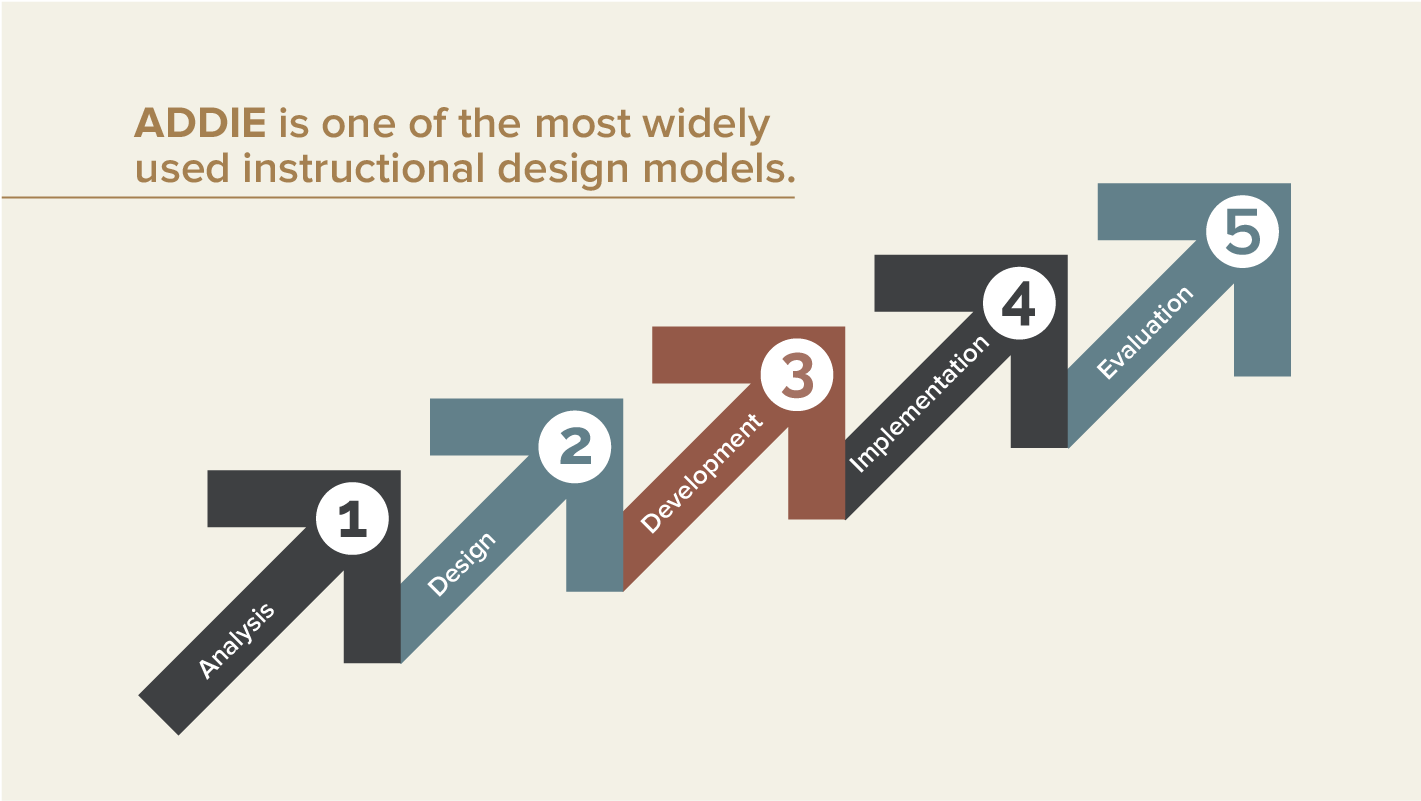|
|
Pedagogical design: concept, principles, modelsIn recent years, education has been moving online. And more and more often, both pedagogical design and instructional design are mentioned in this context. Teachers realize that these are necessary skills to continue working in the new environment. For some, mastering instructional design is even an opportunity to reach a new career level and multiply their income. But what exactly is it? Let's try to figure it out. What is pedagogical design?In a broad sense, pedagogical design is a set of actions to organize online learning. Different sources give numerous interpretations of it in a narrower sense:
In English, this term sounds like "instructional design", which means "instructional design" or "instructional design". So there is little in common with design in the sense that first comes to mind. Pedagogical design is pedagogy multiplied by management and embodied in design activities. Why a teacher needs design skillsThose who were frightened by the word "design", let us reassure you at once: you will not have to be an artist. With your labor, you will have to engage the audience in the educational process, visually and competently present the material, as well as evaluate the effectiveness of their activities. To do this, a pedagogical designer usually solves the following tasks:
As you can see, design skills are just a drop in the ocean here. If a teacher naturally lacks artistic taste, has no eye for detail, and suffers from color blindness, it does not mean that he cannot be a pedagogical designer. He is required to develop a course, and such trifles as its design can be entrusted to contractors. So what is it for? A teacher comes to an ordinary lesson with a ready-made textbook and additional information in his head (or on a piece of paper). How exactly to present the material, he decides on the situation. Some of the content can be omitted altogether. In online education, following the Napoleonic principle "The main thing is to get involved..." will not work. There, by the beginning of the course, you already need to have a certain set of tools on hand. In such a situation, it is no longer material for classes that will be listened to by whoever comes. It is a ready-made business product to be implemented, promoted, and repeatedly sold. Basic principles of pedagogical designPedagogical design existed not so long ago (about 50 years, although in Russia it was learned much later), but the basic principles have already had time to form. Based on them, the teacher will be able to create a quality course: Stimulation of attention. The attraction of attention always precedes the transmission of meanings. Consideration of the sociocultural environment. A student cannot be viewed as a closed system, set up for mindless and emotionless digestion of incoming information. Setting goals and objectives. Learners should be shown in advance and periodically reminded why they are attending this course. Few people learn for the sake of learning. Relying on theory for context. Dry academic facts fade from the memory even faster online than in a regular classroom. Therefore, new material should build on existing knowledge and be relevant to life. Variety of content forms. If it were enough for everyone to read a textbook, there would be no need for pedagogical designers. A modern course should include not only text, but also infographics, interactive assignments, videos, and podcasts. Keeping students engaged. Knowledge is learned better if it is acquired in the process of active activity. Even if the learner is sitting in front of a monitor screen. Feedback. It should be stable and constant. Remotely it is more difficult to assess how the material was perceived by the audience. Therefore, it is necessary to provide conditions for ongoing analysis of the effectiveness of the course. Another important principle that goes unnoticed by the audience is the final evaluation of effectiveness. The criteria should be clear and transparent to both you and your colleagues. Models of instructional designPedagogical design as a scientific field and a practical discipline is constantly updated with new developments. They are analyzed, systematized, and folded into ready-made models. We will consider the most famous of them. Models of instructional design Pedagogical design as a scientific field and a practical discipline is constantly updated with new developments. They are analyzed, systematized, and formed into ready-made models. We will consider the most famous of them. ADDIE
ADDIE is the most widespread model of the development of materials for training. Its name is an abbreviation that includes the names of the main stages of activity: A - Analysis. A preliminary step in which the designer sets goals and determines the needs of the audience. It is desirable at the same step to outline (at least approximately) future tools, forms of control, and criteria for evaluating effectiveness. D - Design. Design is considered here as design. At this stage the work is mainly pedagogical: the general plan of the course is developed, and materials and forms of their presentation are selected. At the end of the stage, the teacher has all the necessary methodological equipment. D - Development. Methodological equipment is given in the form of a ready-made course. Presentations, video sequences, and interactive elements are created. It is also necessary to link them harmoniously with each other, to think over transitions, and to improve visual elements. I - Implementation. The prepared course is transferred from the author's computer to the educational system, through which it will be accessed by students. Before doing this, it is worth reviewing all the elements and making sure that the students will see exactly what the teacher intended to show them. E - Evaluation. The author evaluates the quality of the course according to the previously formulated criteria. Particular attention should be paid to the achievement of objectives, the quality of presentation of the material, and the feasibility of assignments. Identified deficiencies should be corrected before the course is offered to the audience. This is a brief description of the model that gives a general idea of the course of action of the instructional designer. Each step can be broken down into sub-steps to increase accessibility. Into which ones - it is up to the individual instructor to decide based on their approach. SAMIf ADDIE implies a sequential approach, SAM is the opposite. Development is cyclical: not from scratch until the course is ready, but by expanding it. SAM stands for SuccessiveApproximationModel, which stands for Successive Approximation Model. An approximation is a term from mathematics. It is a method of investigating quantitative and qualitative characteristics by replacing complex objects with simpler but similar ones. In the humanities, approximation refers to the deliberate simplification of complex theoretical material to make it fit the practical needs and capabilities of the target audience. The basic iterative approach of SAM involves repetitive cycles consisting of three stages:
The educator creates a prototype course based on a core set of knowledge and tests it immediately. As each new study group progresses through the course, adjustments are made to it. This allows you to get a product that best meets the needs of your audience faster. Iterative development Repeated cycles of 3 stages: Development; implementation; evaluation. In this development sub-stage, it is possible to return to the previous stage for brainstorming and additional design. When the course design becomes acceptable, alpha and beta versions are launched. When these, too, confirm high quality, the product is complete. ALDALD stands for "Agile Learning Design", which refers to the now fashionable practice of work organization. Agile is based on 4 values and 12 principles, which turned out to be relevant for the sphere of education as well. Among the values, we should especially note the priority of people and their interaction over processes and tools and the priority of readiness for change over a plan. Although the English language has the word "agile" (which translates as "nimble, flexible"), in this case it is still an abbreviation. It stands for:
In pedagogical design, the course development is built according to this scheme. Let us present the stages in the form of a table. Backward Design ModelThe Backward Design model involves designing an educational program from the end. In more traditional approaches, we start by analyzing and end by evaluating the results. This time we do things differently: We formulate the main outcomes that the learner should achieve at the end of the course. We define the criteria for achieving these outcomes. Simply put, we develop assessment tools. We deal with the content of the course. Knowing the expected results and how to assess them, it is easier to select the necessary material to achieve them. This model is optimal for practice-oriented and not-too-long courses. It helps the instructor not to overdo the theoretical material and to give the audience only the knowledge they need to achieve specific outcomes. Dick and Carey ModelThe Dick and Carey model is also called the systems approach model. Some consider it an expanded version of ADDIE, while others believe it is closer to Backward Design due to its results-oriented nature. Developing a training course according to this model involves 10 steps:
2 жовтня 2023 о 17:50
|
Оновлено 2 жовтня 2023 о 18:00
|
2,537 переглядів
Також читайте статті про проект: 1. Сайт для школи
2. Електронні щоденники та журнали
|




